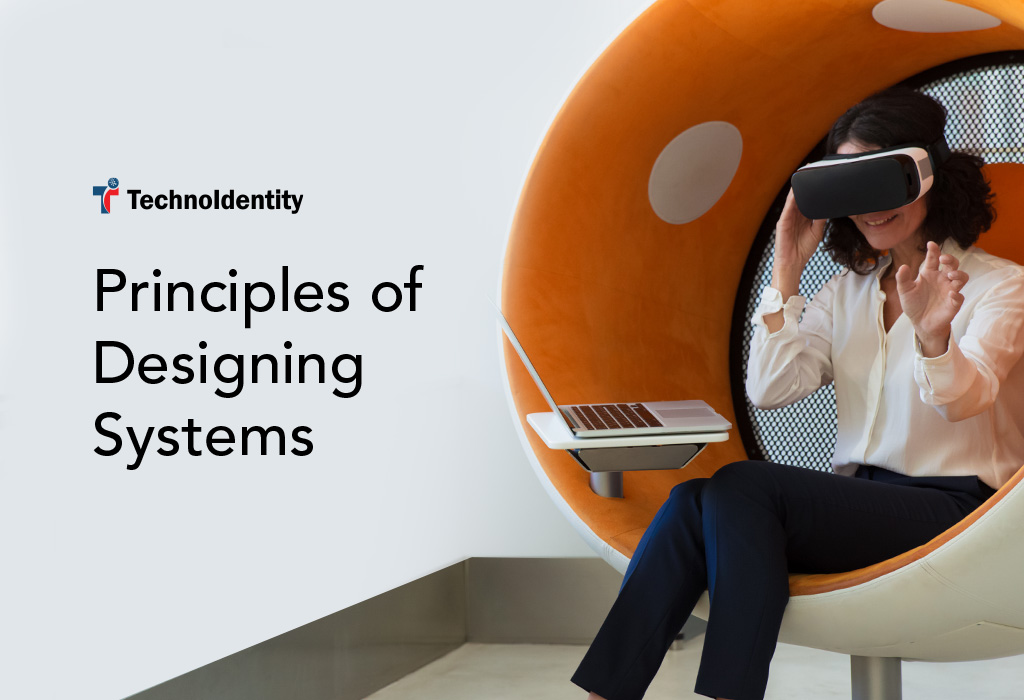
A good system design does not have a clear definition. It seems to be direct in its literal definition but the process of creating a design that is functional and caters to the basic needs of the user is a complex process even when the output may not necessarily be so. Every decision made is influenced by many factors that need to be defined accurately. Broad terms like simple or clear can carry a different meaning for different people or products. To answer the most fundamental questions, it is best to have a set of principles to adhere to.
Creating a System Design
System Design is the step that links everything else and it requires input from multiple designers, developers, feedback sources, and stakeholders. Conflict of opinion is bound to occur on aesthetics if not functionality. So having a set of standards as a guide during the process helps to move forward consistently while emphasizing core values. They are not constant but they act as a base to form any changes as per the product. A good system specifies the following:-
- Elements: All the core objects or basics that should exist in the system.
- Relationship: The connection between the elements in the system and its nature.
- Purpose: The aim of the system both as to its parts and as a whole.
Since this is a collaborative effort simply communicating might not yield the best results. What one person wants to convey can be misinterpreted by the other. Often further in the process, the complexity may increase leading to higher chances of misunderstandings. So by creating a visual representation, mapping the ideas out might resolve any doubts but they would also aid in coordinating.
Challenges during the process
Some of the challenges faced during the system design process may be as follows:-
- There might be a difference in preferences due to personal choices.
- Losing sight of the objective while trying to build a perfect system.
- Division in terms of mental modes may occur where everyone focuses on their specialty.
- The addition of more scope to build a system that addresses all problems might increase complexity.
Principles of a good system design
- Simplicity: Keep it simple while addressing the current problems. Adding complexity to solve problems that do not exist is unnecessary. Addressing today’s problems is more important and the system can be open-ended to accommodate solutions to future issues. Stay focused and remove the burden of assumptions.
- Clarity: An easy-to-use system facilitates interaction with the product and reduces friction. The user must not face hurdles and should be able to figure out the basics of the system through the UI. The architecture of the system must be comprehensible without the need for explanations.
- Avoid Complexity: Displaying a complicated system will deter users. Common steps should be made to be the most efficient while less frequently used parts of the system can be slightly compromised over in terms of complexity. The areas of common interaction should be simple and any parts of the system that are not used as much should not be overexposed.
- Illustrate: Providing suitable examples that are relatable to real-life scenarios is better instructing than an explanation. It is easier to understand and adopt live examples and come up with changes to adapt and implement. Predicting and documenting every possible situation results in a lot of exceptions.
- Focus: Core problems should be clearly stated and there should be no deviation from them. The system design should provide the solution to the problem. Addressing concerns that are not relevant can cause distractions. Designing the system should consist of interconnected parts of the product. Not the whole product itself.
- Scalability: The system design should cater to the needs of different groups of people at varying levels of complexity and remain relevant to all users. It should not isolate the pool of customers that only require the fundamentals of your system. Building a design for the needs of the most exacting customers is easy. However, ensuring that the smaller customers can utilize the product while the benefits of it are also enjoyed by the larger ones is one of the challenges of system design.
- Adjacency: The system design should be similar to the existing designs. Users should not have to adapt too much to navigate through it. That way it’s not only easier for customers to process through but it’s also easier for you to design. System design is a continuous process, with new ideas the system will evolve and change to accommodate them. Anytime the product undergoes expansion or major changes are made to it, the adjacency of your existing system will reduce the chances of barriers and provide a better understanding
Conclusion
These principles do not apply to all and are a byproduct of experiences. They may change as new ones are added or old ones are removed or made more detailed. Essentially, they serve as a starting point for you to build your system design. It sets a foundation for the creation and implementation of ideas and values of the team.


